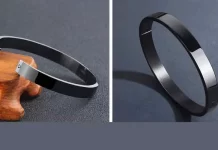If you have been trying to set foot in the on demand mobile app based service industry, then chances are that you have heard of the Gojek Clone App. Gojek has proved its mettle in the on demand world and with its growing popularity, many developers at a global level have started building their own versions of the Gojek clone app. However, there is still a fairly huge amount of mystery associated with the process using which a Gojek Clone App is built. Let us try to understand that in the blog post here today.
What is Gojek App?
The Gojek app is essentially an on demand app built and started in Indonesia as a platform to allow users to hire bike taxis easily. In fact, the name ‘Gojek’ is derived from the word Gojek which means bike in the Indonesian language.
With time the app gained a lot of popularity because it became very evident that more and more people started understanding its potential. Therefore, instead of being limited as a bike taxi enterprise, it branched into a much more holistic driver plus delivery experience.
Soon, it was further developed into an app that could pretty much handle anything from taxis, to deliveries to on demand food deliveries and so on and so forth. This growing popularity made way in entrepreneurs mind to identify it as a successful tool for their businesses in their regions as well.
Also Read: Did You Know About These 10 Kinds Of Protein Powder? | Find Out Here
How to build Gojek Clone?
The Gojek Clone app is very similar to the Gojek app in terms of its flow but comes with its own unique set of features and functionalities. Being such a complex and multi-faceted app, there is a long and intricate process that must be undertaken in order to successfully build the Gojek Clone app. Let us take a look at the process that is involved in building the right Gojek Clone app:
- Understanding the Existing App
The first step is to study and identify the working and functionality of the original app on which you want to base your clone app on. In this case, the development team has to study the existing Gojek app to understand exactly what its flow is, what are the various things in the app that you don’t want and so on and so forth.
- Parallel Research
While the development team is studying the Gojek app, parallel to it, a team of researchers have to study what the market is feeling like. You have to invest some time in identifying the key features of the market, the behavioural pattern of the consumers and what the present demands are for.
- Collaboration between the teams
Once these two teams have done their jobs, they will have to sit and collaborate in order to build a prototype or a structure of what they want the final Gojek Clone app to be like. This can be done in the form of flowcharts to direct and understand how the app will operate.
- Design team
After the development team has understood and finalized the glow of the app, they have to get in touch with the design team to create a flawless and relevant design which suits the needs of the business while also appealing to the customers.
- Rewriting Code Strings
Now, it is time for the developers to work their magic and re write the code strings of the app and build a whole new app based on the prototype that they have built.
- Testing
Finally, the testing team steps in and thoroughly takes a look at what the final app looks like. The testing team introspects the app so closely to make sure that everything works perfectly.
Does the Client Get to See the Final App Before Purchase?
The beauty of buying readymade apps from a white label on demand mobile app Development Company lies in the fact that the client does not have to proceed in the blind. They can access the app; test it thoroughly over Android as well as iOS before planning to invest in it.
This means that even if they have short listed 4 to 5 companies from who they believe they can purchase the right app, all they need to do is test each of their apps on multiple devices from the User’s perspective, the Service Provider’s perspective, the shop’s perspective and the admin’s perspective to gain a holistic idea of how the app works. Then they can decide which one seems to be better aligned with their company’s hopes and aspirations.
What is the process of white labeling?
White labelling is a unique procedure in which a company develops an app for you but does not claim any kind of credit for the development process. This means that once the app is confirmed for purchase, the development company re skins the app with the purchasing company’s logo, brand name, colour scheme, custom modifications, etc. and launches these apps under their server credentials on the Google play store and the iOS App Store.
This process makes it very easy for entrepreneurs to get any kind of app that they like built without having to invest a fortune on hiring resources, renting out a space for the development centre or even purchasing the technology stack.
Conclusion
On the whole, the process of Gojek clone app development is a complex and lengthy one. This is why; it is always best to have at least one or two companies lined up before you finalize who to go for. You will be able to test both the apps and then see for yourself so as to which application makes most sense from your business perspective. Do you want to be a developer? Visit Jooble.




















